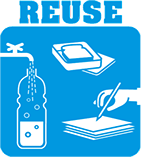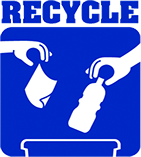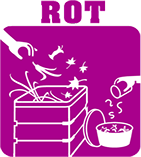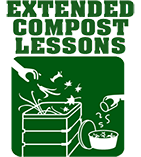4R's Curriculum
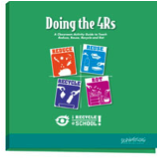
Doing the 4Rs
A Classroom Activity Guide to Teach Reduce, Reuse, Recycle and Rot
Includes 24 California standard-based lessons and five thematic units developed for educators teaching fourth and fifth grades.
Everybody creates garbage, but do we need to do so? How does creating garbage impact us at home, at school or at play? This guide will help you explore with your students the integrated waste management hierarchy of reduce, reuse, recycle and rot (compost), which we call the 4Rs.
This guide was developed for educators teaching fourth and fifth grades and was designed to be engaging and academically challenging for students. The curriculum is hands-on and cooperative, which will motivate your students and encourage academic achievement.
Download the Complete 4Rs Classroom Activity Guide - English
Download the Complete 4Rs Classroom Activity Guide - Spanish
(contains all 24 individual lessons below)
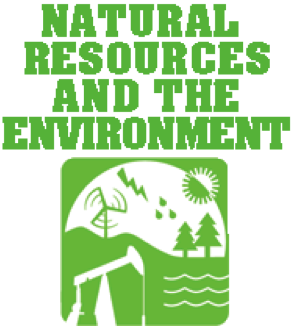 |
Natural ResourcesIn this thematic unit, students learn about the resources needed to produce products they use every day through hands-on investigation. |
Lesson 1: Renewable or Nonrenewable?
Students learn about renewable, nonrenewable and perpetual resources by looking at products made from natural resources.
Students collect litter found on school grounds and link this litter back to natural resources.
Students learn about the 4Rs hierarchy and brainstorm ways to practice the 4Rs.
Movie: Doing the 4Rs: Reduce, Reuse, Recycle and Rot Video(Running Time: 17 min)
Lesson 4: Highest and Best Use of Resources
Students learn about the 4Rs hierarchy by classifying waste items from home that they sort into groups using the 4Rs hierarchy.
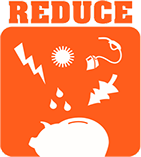 |
ReduceIn this thematic unit, students examine their own consumption habits, both at school and at home, and discuss ways in which they can change their consumer behaviors. |
Students learn how to reduce packaging waste by comparing products that have minimal or excessive packaging.
Students bring in paper items from home and work in groups to brainstorm ways to reduce the amount of paper they use.
Lesson 7: The Art of Saving Birds
Students learn how their waste can impact habitat for plants and animals.
Lesson 8: Reduce: Where Do You Stand?
Students practice critical thinking skills while examining their own values related to reducing waste and the consumption of resources.
|
|
ReuseIn this thematic unit, students are introduced to the concept of reuse. Students uncover simple ways to reuse items and create reuse projects. |
Lesson 9: Reuse or Recycle: Which Comes First?
Students explore the 4Rs hierarchy by looking at the benefits of reusing a plastic bottle before recycling it.
Students participate in making group decisions for identifying the best choice amoung four alternatives for reusing items.
Students learn about the natural resources used to make fabric and use math skills to make a quilt square from reused fabric scraps and old magazines.
|
|
RecycleIn this thematic unit, students discover how to recycle in their own community and learn how recycling conserves natural resources. They explore how new products get made using the materials they recycle at school and home. |
Lesson 12: From Oil to Plastic 101
Students learn about the lifecycle of a plastic product and the nonrenewable resources used to make it.
Movie: From Oil to Plastic Video(Running Time: 9 min 10 sec)
Students learn about different types of plastic by collecting and examining examples of plastic from home.
Students learn how trees are harvested to make paper and make recycled paper with reused newspaper.
Lesson 15: Where in the World Do I Recycle It?
Students use multiple sources of information to research reuse and recycling options for a variety of household goods.
|
|
RotStudents learn through investigation and discovery about the web of life and the decomposition cycle. They learn about the organisms that play a role in the decomposition cycle, why people compost, and how compost improves soil health. |
Lesson 16: What Is Biodegradable?
Students are introduced to the process of decomposition in a compost bin and classify found objects from their school grounds as biodegradable or non-biodegradable.
Movie: Do the Rot Thing(Running Time: 25 min 59 sec)
Lesson 17: The Breakdown on Decomposition
Students learn about the process of decomposition by testing the effects of different variables on the decomposition of organic and inorganic materials over time.
Students learn about the food chain of a compost bin by playing a tag game illustrating the role of decomposers in a food web.
Lesson 19: Compost: How Do You Know?
Students learn about the benefits of adding compost to soil as an amendment. They design and conduct their own experiment to test how compost effects plant growth.
|
|
Extended Compost Lessons |
Students sort through compost in groups and identify different types of compost critters they observe and share their results with the class.
Students learn about worms by observing live red worms in groups and record their observations.
Lesson 22: Building a Compost Pile
Students learn about the process of decomposition, compost and why it’s important by setting up compost bin at school.
Lesson 23: Setting Up a Worm Bin
Students will set up a worm compost bin in the classroom, maintain the bin and observe how the contents change over time.
Lesson 24: Harvesting a Worm Bin
Students learn about methods used to harvest an active worm bin at different stations while brainstorming ways to use finished worm castings.
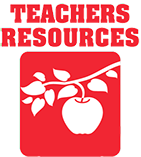 |
Teacher Resources |
